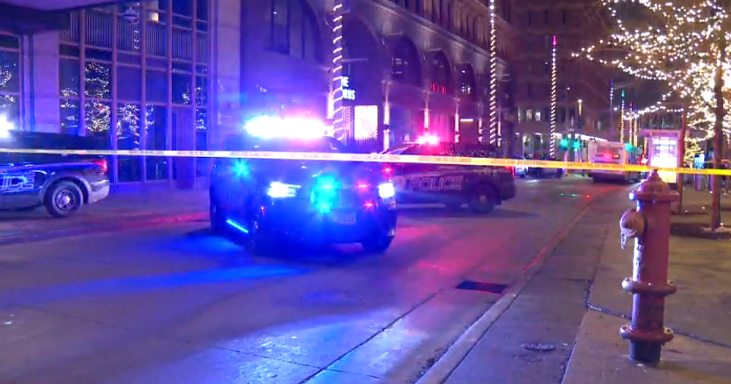Behind-The-Wheel During Cop P.I.T. Maneuvers
MINNEAPOLIS (WCCO) -- We've all seen police chases on television, but what's it like to experience first-hand what it takes for Minnesota police officers to stop a runaway driver?
Police call the highly specialized maneuver a P.I.T. maneuver, which stands for Pursuit Intervention Technique. The point is to get the vehicle off the road and ultimately arrest the driver.
When first seen, the maneuver involving the two cars looks more like a version of adult bumper cars, where the one taps the back of the other. There's a thrill every second for those sworn officers who train on P.I.T. at Dakota County Technical College. But in reality, this maneuver is no amusement park ride. It's serious stuff.
"It's a safer ending to a pursuit. You're in control of the ending of that pursuit," said Jim Unger, a former police officer who's used the maneuver hundreds of times.
Unger trains sworn Minnesota officers how to execute the maneuver correctly. Officers are required to wear a helmet and neck-brace during their training, and so was WCCO's James Schugel when he went through some of the same training.
"You want to match the speed, get right up close, make contact and spin him. You got to be there, and as soon as you touch him, spin him," said Unger as he used the maneuver on a test car on the course. "Car goes around the corner. You take them out. The pursuit is done. Nobody got killed. Nobody got hurt. That's why I think it's important. You're saving lives."
Minnesota requires all sworn officers to train for chases. They must complete an eight-hour course in emergency vehicle operations and in police pursuits every five years. Hoever, the state does not require training on the P.I.T.
Some departments believe, when executed correctly, the maneuver brings pursuits to a safe end.
"At that time, your adrenaline's going pretty good," said Eagan Police officer Brian Rezny, who chased Stephen Jones six miles through Eagan. Jones was wanted for running red lights. Speeds topped more than a 100 miles per hour.
"He's running hard from us, and I'm thinking this guy's not going to stop," Rezny said. So he initiated the maneuver.
"I'm going to try and push him into that lane," he said on his police radio, before tapping the car's back end to the right. Jones' car spun and crashed into the ditch. Within seconds, Eagan officers arrested Jones.
"It couldn't have worked out much better," said Rezny. "This is a situation where we could apply some of those tools, and we had a successful outcome."
That chase started in Minneapolis, a city that doesn't use the maneuver. St. Paul also doesn't train or allow its officers to use the technique. But several suburbs do allow it, including Eden Prairie, New Brighton, Burnsville and Brooklyn Park.
Each department requires it officers to follow policy before performing the P.I.T. For instance, in one department, cars can't be going more than 40 miles per hour on a straight road. Other departments don't allow officers to use the P.I.T on motorcycles or SUVs with narrow wheelbases. Several policies state that the ideal location for a P.I.T. is wide and free of obstructions, so vehicles don't impact other objects, something St. Paul doesn't have.
"The pit is absolutely safe in the right environment," said St. Paul Sergeant Paul Paulos, who believes it's too dangerous to initiate the maneuver where city streets are narrow and busy. "The technique's been around a long time. It's proven successful. It's just in a dense, populated area that it's not feasible to do."
An open, country road is perfect for the maneuver. A Minnesota State Patrol sergeant chased a drunk driver for less than a minute before executing what's considered a successful maneuver. No one was hurt in the 2004 Cass County chase. Now the dash cam video is used to train other troopers to execute the maneuver.
It's the same textbook example of P.I.T. that Unger has taught nearly 300 sworn officers. The use of this fast, action-packed police tactic shows no signs of slowing down.



